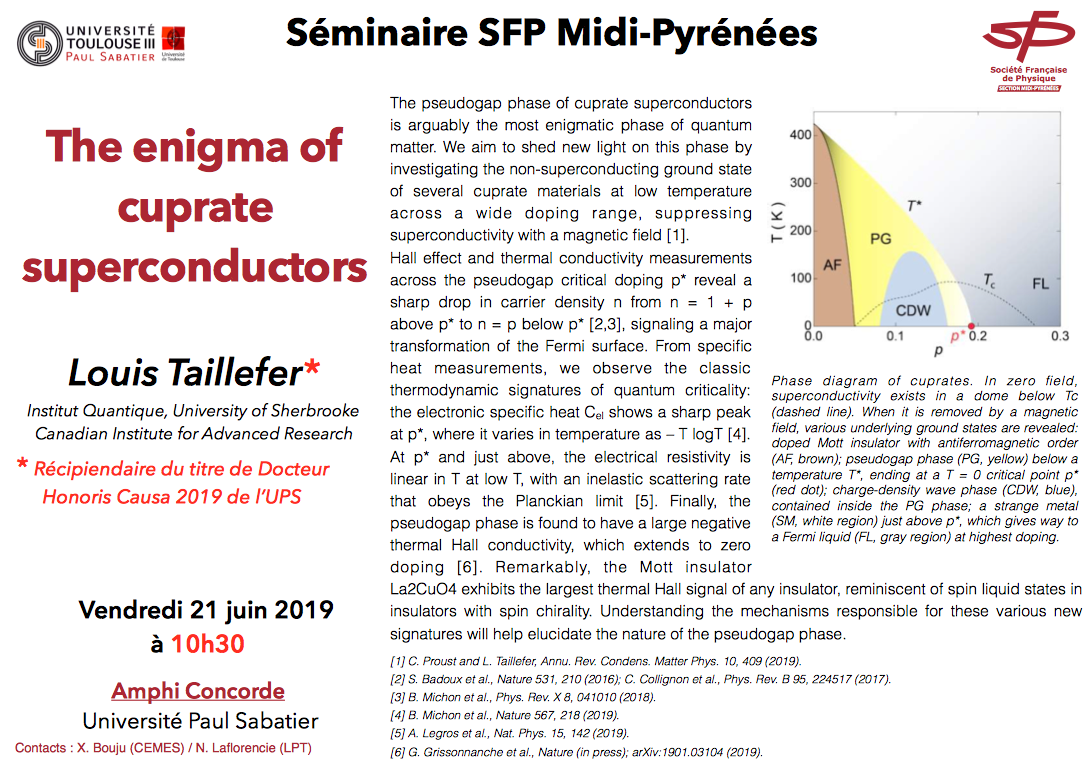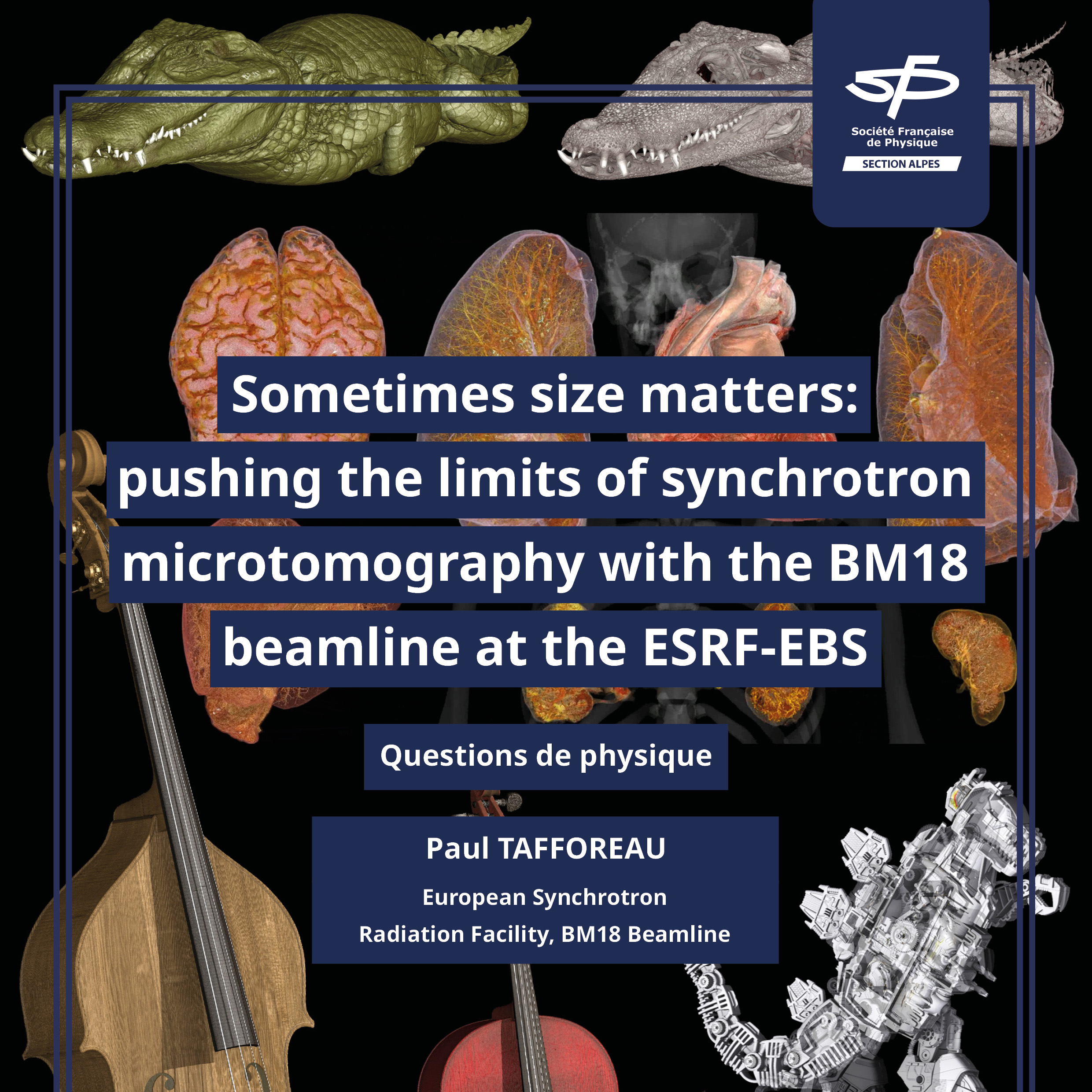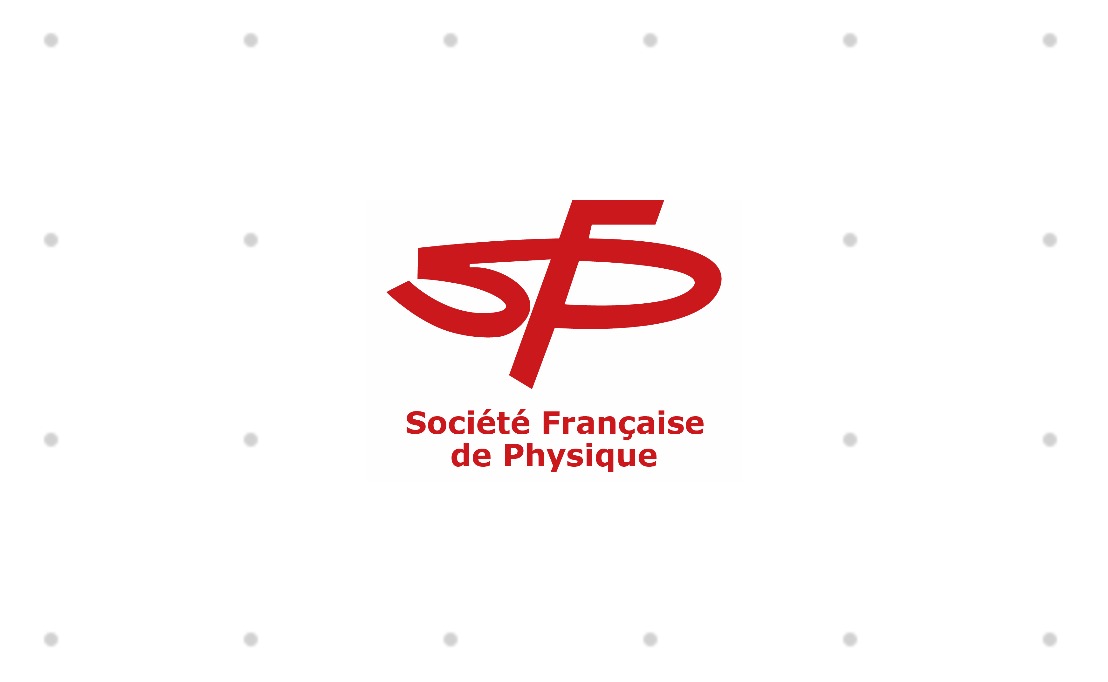The enigma of cuprate superconductors
La section Midi-Pyrénées organise un séminaire le Vendredi 21 juin qui accueillera Louis Taillefer de l'université de Sherbrooke au Canada, à l'occasion de la remise de son titre : " Docteur Honoris Causa " à 10h30 (attention horaire inhabituel), dans l'amphithéatre CONCORDE de l'Université Paul Sabatier.

The pseudogap phase of cuprate superconductors is arguably the most enigmatic phase of quantum matter. We aim to shed new light on this phase by investigating the non-superconducting ground state of several cuprate materials at low temperature across a wide doping range, suppressing superconductivity with a magnetic field [1].
Hall effect and thermal conductivity measurements across the pseudogap critical doping p* reveal a sharp drop in carrier density n from n = 1 + p above p* to n = p below p* [2,3], signaling a major transformation of the Fermi surface. From specific heat measurements, we observe the classic thermodynamic signatures of quantum criticality:
the electronic specific heat C el shows a sharp peak at p*, where it varies in temperature as – T logT [4].
At p* and just above, the electrical resistivity is linear in T at low T, with an inelastic scattering rate that obeys the Planckian limit [5]. Finally, the pseudogap phase is found to have a large negative thermal Hall conductivity, which extends to zero doping [6]. Remarkably, the Mott insulator La2CuO4 exhibits the largest thermal Hall signal of any insulator, reminiscent of spin liquid states in insulators with spin chirality. Understanding the mechanisms responsible for these various new signatures will help elucidate the nature of the pseudogap phase.
[1] C. Proust and L. Taillefer, Annu. Rev. Condens. Matter Phys. 10, 409 (2019).
[2] S. Badoux et al., Nature 531, 210 (2016); C. Collignon et al., Phys. Rev. B 95, 224517 (2017).
[3] B. Michon et al., Phys. Rev. X 8, 041010 (2018).
[4] B. Michon et al., Nature 567, 218 (2019).
[5] A. Legros et al., Nat. Phys. 15, 142 (2019).
[6] G. Grissonnanche et al., Nature (in press); arXiv:1901.03104 (2019).
Article posté le 06/06/2019

